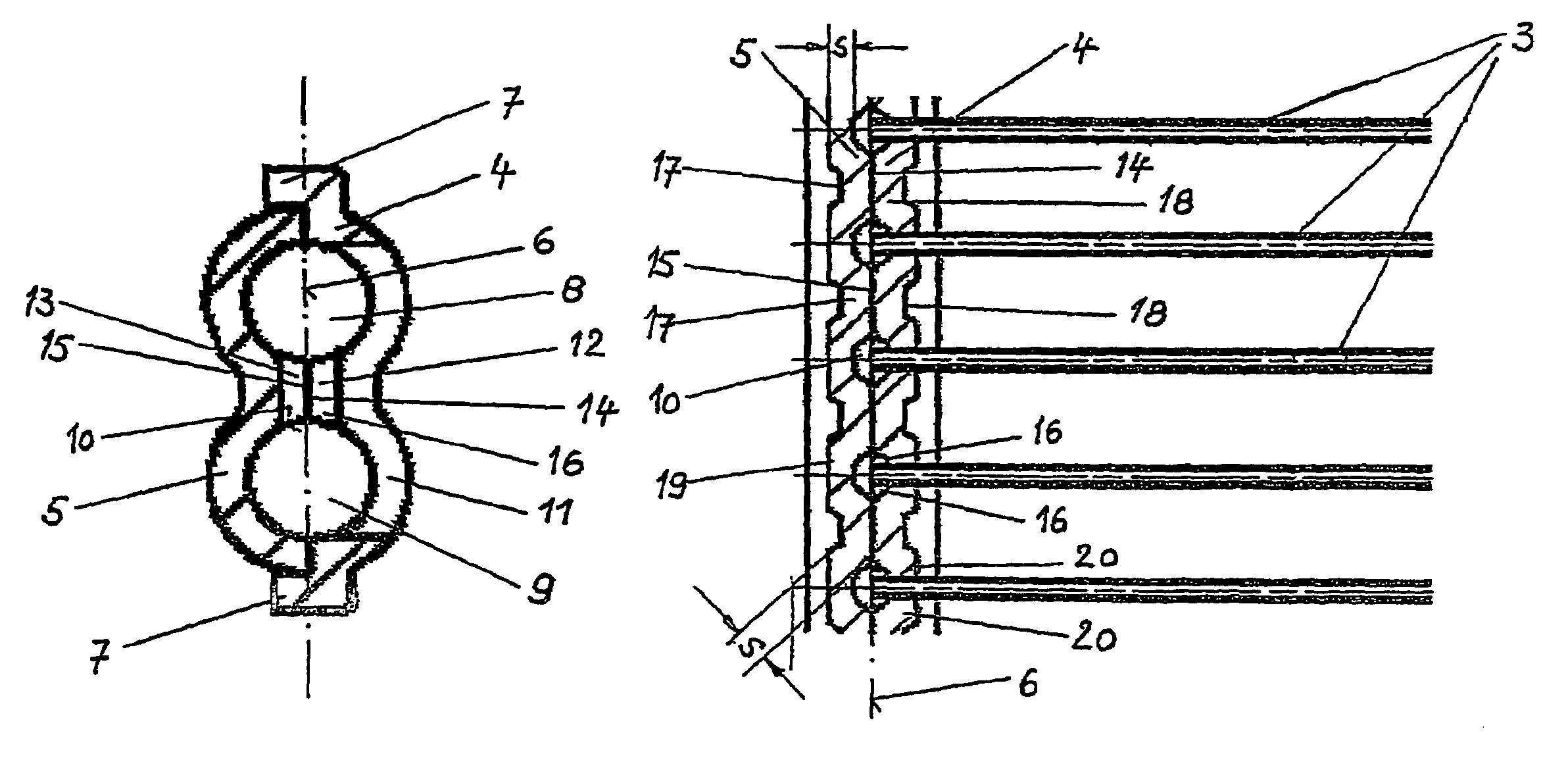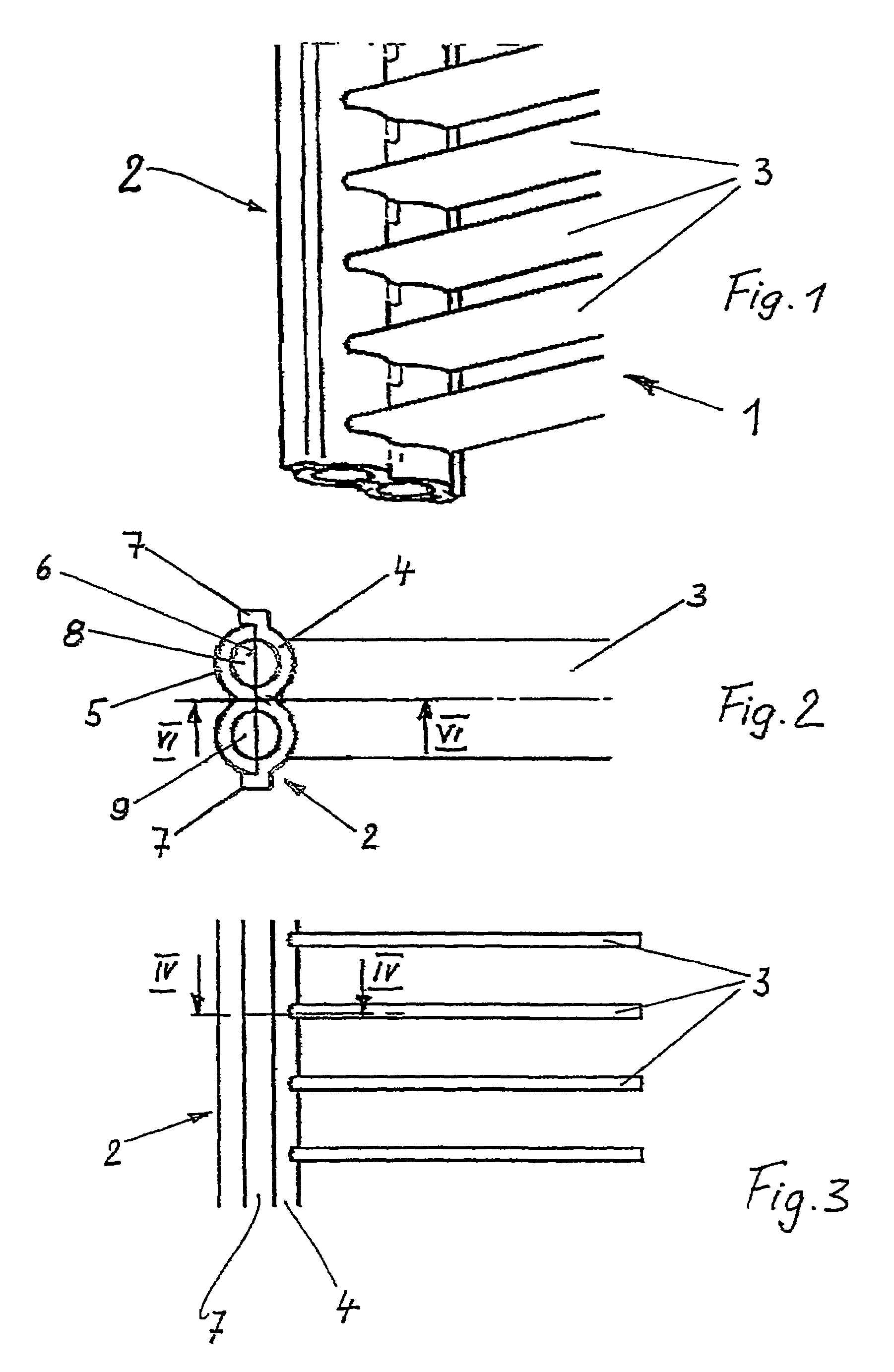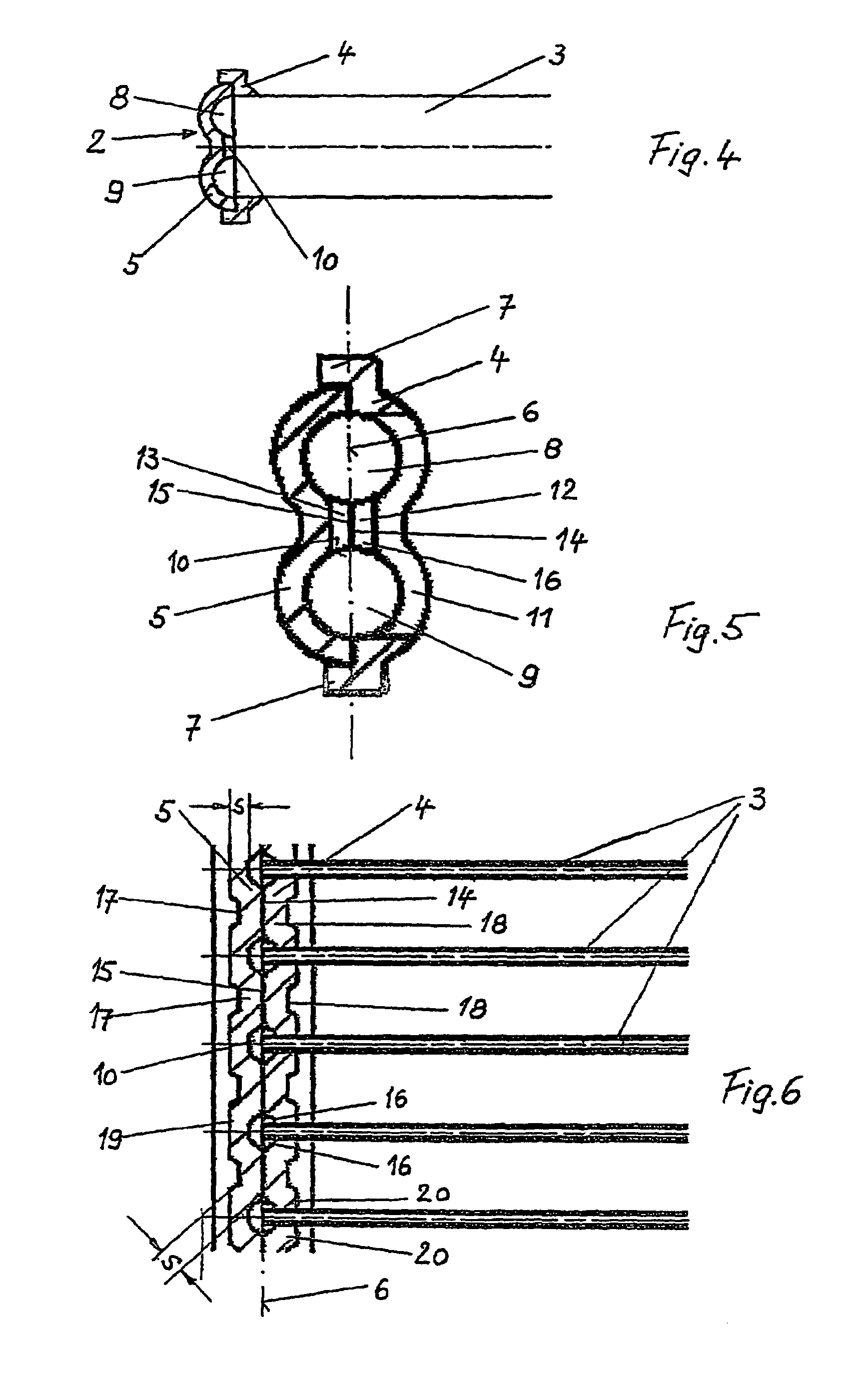Heat exchanger
a technology of heat exchanger and header, which is applied in the direction of steam/vapor condensers, lighting and heating apparatus, and stationary conduit assemblies, etc., can solve the problems of increasing the ability of the header to withstand internal pressure and low production costs
- Summary
- Abstract
- Description
- Claims
- Application Information
AI Technical Summary
Benefits of technology
Problems solved by technology
Method used
Image
Examples
Embodiment Construction
[0029]FIG. 1 shows a heat exchanger which is designed as a gas cooler 1 and has a header 2 and flat tubes 3 which open out into the header and between which corrugation fins (not shown) may be arranged. A gas cooler of this type is used in refrigerant circuits for motor vehicle air-conditioning systems operated with CO2 as refrigerant, but can also be used in general as a pressure-resistant heat exchanger.
[0030]FIG. 2 shows a side view of the gas cooler 1 with the header 2 which is composed of a tube plate 4 and a cover 5. The tube plate 4 and cover 5 are approximately W-shaped and formed and arranged symmetrically with respect to a parting plane 6, with the tube plate 4 having edge strips 7 which engage laterally around and fix the cover 5. Tube plate 4 and cover 5 form two longitudinal passages 8, 9, which are both substantially circular in cross section. According to another embodiment, the two longitudinal passage have different cross sections. The flat tubes 3 are received by t...
PUM
 Login to View More
Login to View More Abstract
Description
Claims
Application Information
 Login to View More
Login to View More - R&D
- Intellectual Property
- Life Sciences
- Materials
- Tech Scout
- Unparalleled Data Quality
- Higher Quality Content
- 60% Fewer Hallucinations
Browse by: Latest US Patents, China's latest patents, Technical Efficacy Thesaurus, Application Domain, Technology Topic, Popular Technical Reports.
© 2025 PatSnap. All rights reserved.Legal|Privacy policy|Modern Slavery Act Transparency Statement|Sitemap|About US| Contact US: help@patsnap.com



